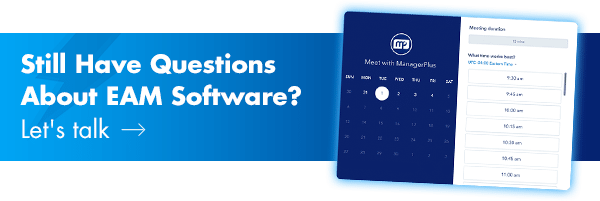Are you responsible for conducting eyewash station checks at your facility?
Then read our complete inspection checklist to learn how to maintain compliance.
When it comes to employee safety, you can’t take any chances. Your eyewash stations must be accessible and operating properly to provide emergency treatment. Your dedicated safety inspector should be trained in the appropriate OSHA and ANSI standards and you must check your eyewash stations regularly.
With OSHA fines increasing by 80% and violations for inadequate eyewash equipment resulting in fines of more than $100,000, this is not something you can ignore.
What is the OSHA standard for eyewash stations?
Both OSHA and ANSI have requirements for eyewash stations. ANSI sets the standards while OSHA is responsible for enforcing them.
The official OSHA 1910.151(c) guidance for eyewash stations states that:
“Where the eyes or body of any person may be exposed to injurious corrosive materials, suitable facilities for quick drenching or flushing of the eyes and body shall be provided within the work area for immediate emergency use.”
OSHA does not give more detail about what constitutes “suitable facilities” or “immediate emergency use”. That comes from ANSI. ANSI Z358.1-2014 sets out the standard for the installation, equipment selection, operation, and maintenance of eyewash stations.
- Specifications
ANSI Z358.1-2014 recommends that eyewash stations have a water flow of 0.4 gpm at 30 psi. The water nozzle should be mounted between 33 and 45 inches above the floor and be at least six inches from any obstruction. You can use an eyewash gauge to test the flow pattern.
Although personal eyewash devices are permitted, they should only be used as temporary units for immediate flushing before an employee is transferred to the permanent eyewash station.
- Activation
Water must flow within one second of operation and continue to flow until you turn the activation valves off manually. You must also take measures to prevent the equipment from freezing in cold weather.
- Water flow
Eyewash stations must be able to provide a continuous flow of water for at least 15 minutes. In practical terms, that means the equipment should be plumbed into the water supply.
- Water temperature
Your eyewash stations must deliver tepid water that’s between 60 and 100 degrees Fahrenheit.
- Location
The travel time from a hazardous area to an eyewash station should be no more than 10 seconds. That’s equivalent to a distance of around 55 feet. Your eyewash station must also be on the same floor as the hazard and have a clear path of travel. You should install it in a brightly lit area with a highly visible safety sign.

How often do eyewash stations need to be inspected?
The last thing you want is for an employee to dash to the eyewash station only to be greeted by sediment-laden, stagnant water. That’s why regular eyewash station inspections are essential.
According to OSHA, weekly testing and maintenance are required to ensure that emergency eyewash stations are operating safely and properly. As part of the inspection, you should activate plumbed eyewash stations for long enough to clear the supply lines of the sediment and bacteria build-up caused by stagnant water.
Self-contained and portable eyewashes must also be inspected weekly to check whether the flushing fluid needs to be topped up or replaced.
Weekly eyewash inspection checklist
These are the weekly steps that you must take to keep your eyewash stations compliant and functioning properly:
- Make sure all pathways to your eyewash stations are free from obstructions and trip hazards
- Replace any broken or missing parts immediately
- Check that nozzle caps are present to prevent contamination
- Check that the nozzles, nozzle caps, and the bowl or sink are in a clean and sanitary condition
- Activate all eyewashes to make sure they are operational
- Verify that the nozzle caps come off when the eyewash is activated
- Check that the water flows within one second of activation
- Verify that the water continues to flow until it’s manually turned off
- Check that the water flow is gentle and continuous and provides a full 15-minute compliant flush
- Continue to run the water until all sediment is cleared from the supply line
- If you operate a dual-stream eyewash, make sure both streams rise to an equal height in a pattern that will flush both eyes simultaneously
- Make sure the equipment is protected against freezing temperatures
- Measure the water released by eyewash using a flow meter to make sure it’s compliant (a minimum of 0.4 gpm at 30psi)
- Check that the water is tepid (60-100 degrees Fahrenheit) using an industrial thermometer
- Report any problems to your building maintenance provider
- Document the inspection on the unit’s inspection tag and in a centrally-controlled documentation log
It’s worth noting that your weekly eyewash inspection can become a useful refresher course for employees in the operation of and travel path to your eyewash station.
How can EAM software help you manage and track inspections?
ManagerPlus® EAM software makes it easy to streamline eyewash station inspections and manage predictive and preventive maintenance. Every inspection report is stored securely within the software, and as ManagerPlus is always connected, you can access inspection results and reports at any time, wherever you are. The result is a safer workforce and faster proof of compliance come audit time.
Start with a live, personalized demo with one of our experts to see just how efficient maintaining your OSHA compliance can be.
Executive summary
Weekly eyewash station inspections are essential to maintaining your OSHA compliance and checking that they can be operated properly. Once you’ve gone through your weekly eyewash inspection checklist, you can easily store the inspection reports securely in ManagerPlus for quick access and faster compliance come audit time.


